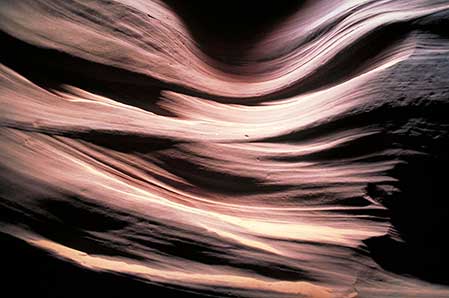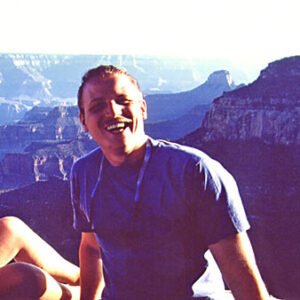You are here: Nature Science Photography – Image creation, Depth and Size – Space perception
Shadows arise from the interaction of light with the objects and terrain around us, providing us with important clues about the presence of spatial extent and depth. Basically, we distinguish between the hard shadow that an object casts on its surroundings and the light-dark pattern of a textured surface known as chiaroscuro. We often consciously perceive hard shadows but only consider them as a clue to spatial depth when we are dealing with extended surfaces. Chiaroscuro, on the other hand, plays a major role in the more unconscious perception since it is closely related to the spatial structures of object surfaces.

But on closer inspection, shadows are much less unambiguous than they appear to us in our everyday perception. Elevations and depressions both produce characteristic shadow images on the side facing away from the light (elevations) or facing towards the light (depressions). Knowing the illumination conditions allows us to determine whether we have an elevation or a depression in front of us. Many times, we don’t know where the light comes from. In such situations, however, a perception of spatial extension always arises, based on a practical guess of our visual intelligence. This is called an educated guess. To all appearances, this guess is based on the assumption of an overhead light source as long as we have no definite other clues. This makes perfect sense against the background of our evolutionary history, since we have spent by far the longest time with the sun as our only source of light. Directional light from artificial sources, on the other hand, has only existed for such a short time that it can hardly have found expression in our visual system. For this reason, we have probably learned to accept the light direction „from above“ in case of doubt and to orient our decision, whether elevation or depression, on it.
Figure 31 (Ambiguous shadow) illustrates this connection. In the upper picture, a small hill seems to jump out. In the lower picture, on the other hand, we are looking into a depression. In reality, it is a single image, which is shown once upside down (A) and once rotated by 180 °. If you copy the image and turn it upside down in a photo editor, you can reproduce the effect. Interestingly, the once right and once wrong impression remains, even though you now know the nature of the illusion. This supports our visual perception’s independence from our knowledge.

Next Relative size
Main Image creation, Depth and Size
Previous Occlusion and overlapping
If you found this post useful and want to support the continuation of my writing without intrusive advertising, please consider supporting. Your assistance goes towards helping make the content on this website even better. If you’d like to make a one-time ‘tip’ and buy me a coffee, I have a Ko-Fi page. Your support means a lot. Thank you!


 Since I started my first website in the year 2000, I’ve written and published ten books in the German language about photographing the amazing natural wonders of the American West, the details of our visual perception and its photography-related counterparts, and tried to shed some light on the immaterial concepts of quantum and chaos. Now all this material becomes freely accessible on this dedicated English website. I hope many of you find answers and inspiration there. My books are on
Since I started my first website in the year 2000, I’ve written and published ten books in the German language about photographing the amazing natural wonders of the American West, the details of our visual perception and its photography-related counterparts, and tried to shed some light on the immaterial concepts of quantum and chaos. Now all this material becomes freely accessible on this dedicated English website. I hope many of you find answers and inspiration there. My books are on